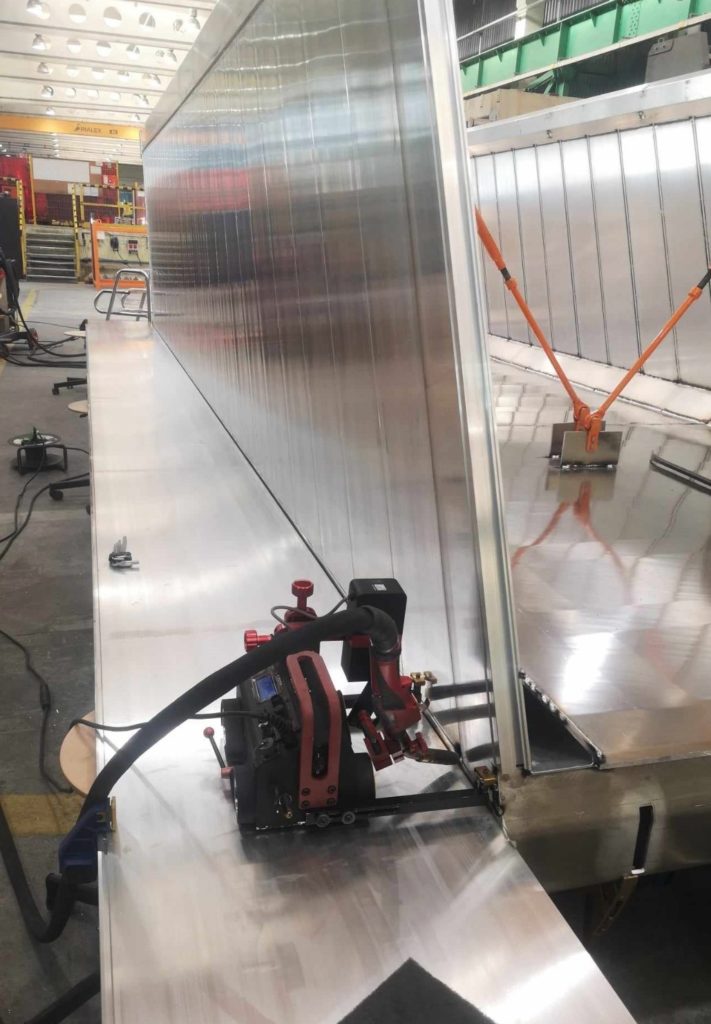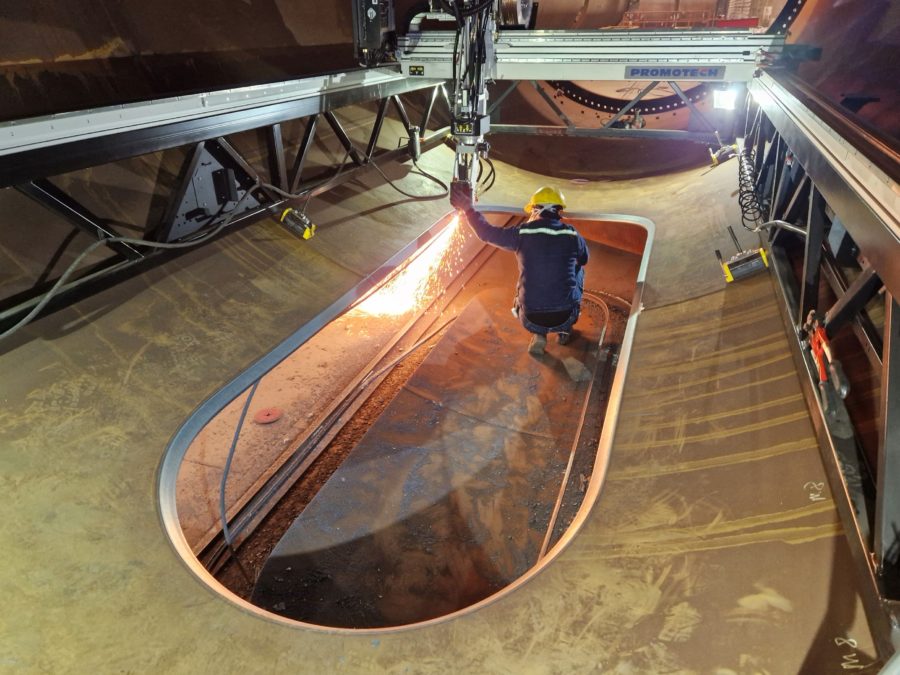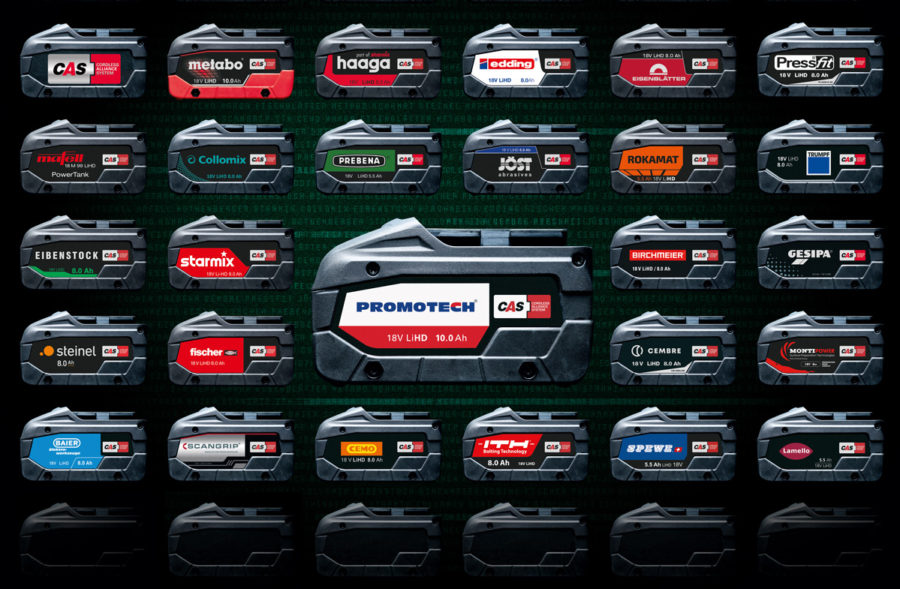How Is Welding Aluminum Different from Other Metals
Aluminium – or aluminum, depending on where you’re from – is a popular material in modern fabrication. It’s lightweight, corrosion-resistant, and visually attractive. But when it comes to welding, this non-ferrous metal presents some very specific challenges. The combination of thermal conductivity, oxide formation, and lack of colour cues makes aluminium much less forgiving than other common metals.

Many fabricators, who are familiar with welding steel or stainless steel, are surprised by how differently aluminium behaves. Unlike steel, aluminium demands finesse, control, and a deep understanding of its behavior under heat to achieve a defect-free result. Using a welding tractor helps ensure consistent results, especially for longer or repetitive welds.

Industries using aluminium welding
Aluminium, as a light and durable material, is used in many industries where strength-to-weight ratio and corrosion resistance matter:
- Automotive trailers and truck bodies
- Production of railway passenger cars and locomotives
- Shipbuilding and marine structures
- Architecture and decorative elements
- Aerospace and aviation components
- Industrial frames and machine housings
- Heat exchangers and piping systems



Aluminium’s unique properties
Before we start welding the workpiece, first we clean it thoroughly. Why? Aluminium’s natural tendency for oxidation requires careful preparation to avoid welding defects such as distortion and porosity. Moreover, oil, dirt, air and debris can also negatively impact the weld zone, affecting the strength and appearance of the workpiece.
Here’s a quick comparison of aluminum vs carbon steel and stainless steel:
| Property | Aluminum | Carbon Steel | Stainless Steel |
|---|---|---|---|
| Thermal conductivity | Very high – heat dissipates fast | Low | Medium |
| Melting point | ~660°C | ~1425–1540°C | ~1400–1450°C |
| Oxide layer | Thick, hard, high melting point | Thin, easy to remove | Forms chromium oxide (protective) |
| Color change during heating | None – hard to gauge temperature | Turns red/orange | Discolors (blue/gold) |
| Preferred welding method | MIG (pulsed) / AC TIG | MIG / Stick / TIG | TIG / MIG |
| Gas shielding | 100% Argon or Ar/He mix | CO₂ or Ar/CO₂ mix | 100% Argon (for TIG/MIG) |
| Surface prep | Critical – oxide removal is a must | Basic cleaning | Needs to be oil/grease-free |
Oxide layer
Aluminium oxidises rapidly when exposed to the atmosphere, forming a thin oxide layer with a higher melting temperature (2072 C°) than the base material – aluminium (660 C°). Welding through this barrier can burn holes in the workpiece. The oxide layer can be dissolved with the use of proper solvents.
Porousness
Aluminium in its molten state, absorbs large amounts of hydrogen, resulting in tiny voids or bubbles in the weld metal. This weakens the structural integrity of the metal, making it vulnerable to failure from pressure and stress. Porosity is minimised by using clean materials and equipment, removing oil and grease from the metal surface, and using a shielding gas to limit contamination.

High thermal conductivity
The thermal conductivity of aluminium is around 235 W/m·K, which is 4–5 times higher than that of steel (typically ~50 W/m·K). This means that aluminium conducts heat very efficiently and rapidly across its surface and through its volume. As soon as you apply heat during welding, it spreads quickly throughout the workpiece rather than staying concentrated near the weld zone.
High thermal conductivity has a major impact on the weld behaviour and how the equipment should be configured. Because aluminium distributes heat so evenly, it’s harder to maintain a focused heat zone, especially in thinner material.
A welding tractor ensures a constant travel speed, which is a huge advantage. Without it, manual variations could cause the weld to cool too quickly (causing lack of fusion) or heat up too much in localized areas (causing burn-through).



Low melting point
Aluminium melts at a relatively low temperature compared to many other metals. The melting point of aluminium is about 660°C, whereas steel melts at about 1370-1500°C and copper at about 1085°C.
“Low melting point”, combined with high thermal conductivity, means aluminium heats up and cools down quickly. So it is easier to accidentally overheat aluminium or burn through, especially if you’re using a manual process. And if not handled properly, it poses a higher risk of cracking and it is harder to maintain a stable weld pool.

Hot Cracking
High levels of thermal stress can lead to hot cracking or solidification cracking in aluminium welds. It is one of the reasons why aluminium was once considered unsuitable for arc welding.
In addition, aluminium’s surface oxide (aluminium oxide) has a much higher melting point—around 2050°C which complicates things further. But now you know all that needs to be done is to clean it properly before starting any welding.
No colour change
Unlike steel, aluminum does not discolor as it heats, so there is no visual indication of overheating.
Storage
Aluminium is a soft metal, so it is best to keep it indoors at room temperature, dry and not to stack them (ex. aluminium sheets), but rather keep them in a vertical position. Proper storage, equipment maintenance and metal preparation are the steps to take to avoid impurities.
Aluminium welding methods
TIG and MIG are the most commonly used techniques for welding aluminium. Due to the high thermal conductivity of aluminium, heat is quickly removed from the weld zone, so more initial energy is required to reach and maintain the melting temperature (660°C for aluminium).
TIG Welding
TIG or Gas tungsten arc welding (GTAW) is one of the most common welding techniques for joining aluminium because of its precision and quality. It can consistently generate enough heat to fuse aluminium alloys, with the ability to weld both thin and thick sections.

MIG Welding
MIG or Gas Metal Arc Welding (GMAW) is an excellent welding technique for thicker aluminium sheets as the heat input is higher than with TIG welding. The mechanical wire feed system provides faster travel speeds from the gun. Shielding gases are used to protect the weld from contamination.
Successful welding of aluminium requires the right filler material, welding parameters, and appropriate shielding gas to prevent contamination and achieve durable welds.
Dual Gas Shielding (Sometimes)
Aluminium is highly reactive when exposed to air at high temperatures which makes shielding gas coverage critical for the effectivity of the process. While argon is the standard shielding gas, in more advanced applications may require helium blends or even dual gas shielding and adjustable gas flow. This could involve forming nozzles or additional gas cups to improve gas coverage, especially when working with large weld pools.
Use the Right Filler Wire
Aluminium alloys are a diverse group, and not all filler materials are compatible. Common wires include AlSi5 (ER4045) and AlMg4.5Mn (ER5183), depending on the alloy. Select the filler based on the base material alloy and required mechanical properties. Incorrect filler metal can lead to cracking or corrosion.
The Advantage of a Welding Tractor for Aluminium Applications
Welding aluminum isn’t just about skill — it’s about control. And welding tractors give fabricators the control they need to produce high-quality aluminum welds, every time. A well-chosen tractor will boost productivity, provide necessary consistency, and reduce operator fatigue.

Automated welding tractors improve the process of aluminium welding by offering:
- Variable speed control
- Torch cross slides for precise adjustments
- Compatibility with aluminum-specific MIG or TIG equipment
- Vacuum-track system
Precise Travel Speed
Aluminium requires a stable, smooth travel speed to avoid overheating or undercutting. Any variation in speed can cause visible defects or compromise the integrity of the weld. A welding tractor ensures consistent movement throughout the weld, something that’s impossible to achieve by hand.

Accurate Torch Positioning
Since the weld pool is more fluid and reflective than with steel, incorrect angles or distances can easily lead to poor penetration or contamination. Welding carriages allow for precise torch positioning, helping to control the weld pool and reduce the size of the heat affected zone (HAZ). Tractors which provide accurate adjustment of both angle and distance make setup precise and repeatable.
Rigid torch holders won’t drift during movement, which is especially important when using TIG or MIG with push-pull torches, both common in aluminium welding.

Suitable power source
To ensure better heat management and consistent heat delivery throughout the process, welding tractors need to be paired with a suitable power source—typically a pulsed MIG or high-power TIG system. Make sure your power source is up to the task and can be easily integrated with your welding carriage. A machine designed for steel may not have the necessary features necessary to handle aluminium.
In production settings — like aluminum trailers, tanks, or marine components — repeatability is crucial. Welding tractors provide proper control, keep the weld consistent and help avoiding overheating and in result, enable a repeatable, defect-free result.









